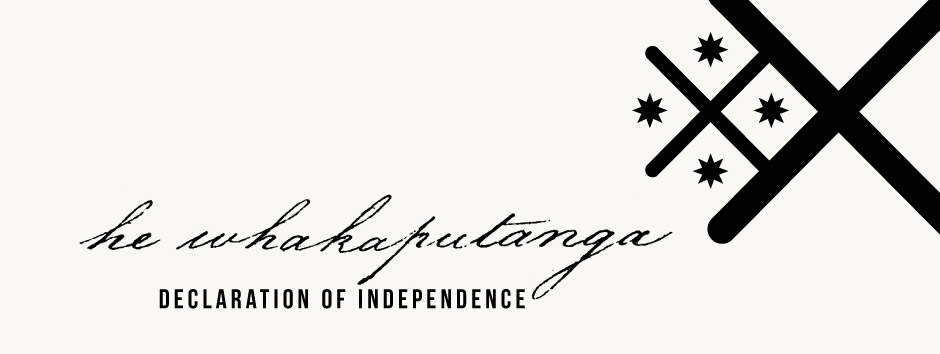Signing details
Pī, also known as Pīhāngū, was one of the principal leaders of Te Māhurehure, based at Waimā in southern Hokianga. He was the son of Moka and his wife Punga; Te Hōtete and Waitohirā were his grandfather and grandmother respectively. Family ties connected Pī and the people of Hokianga to many events in Pēwhairangi (the Bay of Islands) – Hongi Hika was Pī’s uncle, and Te Wheoki, Hongi’s niece, was his wife. Their son Arama Karaka Pī became a prominent leader in his own right – he was married to Hariata Rongo, the influential daughter of Hongi and the widow of Hōne Heke Pōkai.
These connections created a network of obligations that could result in inter-hapū conflict. In March 1828, long-standing grievances saw a number of rangatira killed or wounded, including the son of Pōmare I, and Te Whareumu of Kororāreka. Rewa, Hōri Kīngi Te Wharerahi and Eruera Maihi Patuone (all future He Whakaputanga signatories) worked hard to secure peace, which was eventually made at Pī’s pā at Waimā.
In 1831 Pī became one of the first Māori to purchase a European sailing ship. This was the 18-ton cutter Emma, which he renamed Taeopa. However, as with many early dealings with Pākehā traders, the purchase was bittersweet. Pī had bought the ship by agreeing to supply a cargo of flax and timber but ended up forfeiting two blocks of land when this was not completed in time. And though he believed he was the full owner of the ship, the seller, John Stewart, retained the ship’s registry papers and was able to on-sell it later.
In 1832 a major taua against the people of Tauranga left Pēwhairangi. The Reverend Henry Williams, who accompanied the taua in the hope of making peace, noted that Pī travelled to and from the battle on Taeopa.
After the Waitangi home of British Resident James Busby was raided in 1834, Pī sent assurances of protection. A year later he was the first rangatira from Hokianga to sign He Whakaputanga. His long, fluid tohu was made on 28 October 1835.
In March 1837 a major conflict erupted among Ngāpuhi hapū, resulting in about thirty to fifty deaths, including Tenana of Ngāti Kuta. Pī himself was killed in an ambush around 14 June 1837.
As his body was being transported back to Te Raewae pā, the returning party was met by Wesleyan (Methodist) missionaries James Wallis and John Whiteley. They were concerned that with the death of Pī the war might spread to Hokianga. The conflict appears to have ended with the death of Tītore, but emotion over the loss of Pī simmered in Waimā for many years afterwards. His father Takahorea composed a lament for his son, in which he likened him to a kawau (shag) as he died; the kawau was often used as a metaphor for a chief.


Community contributions